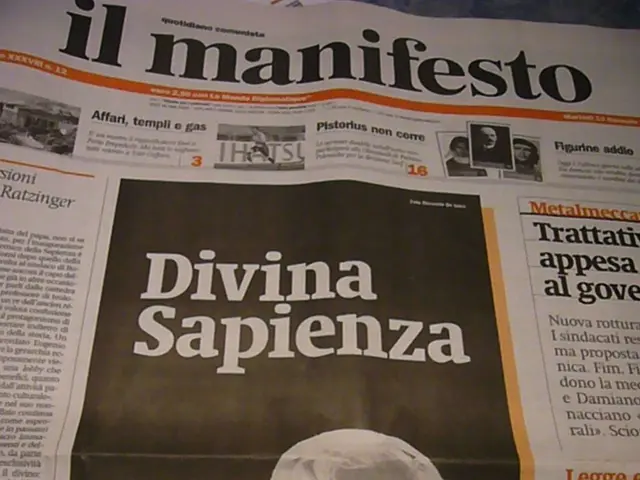Trump seeks to reduce advantages for student loan holders
The Public Service Loan Forgiveness (PSLF) program, designed to help attract and retain professionals in public service fields, is undergoing significant changes under the Trump administration. The U.S. Department of Education has proposed rules to exclude employees of employers engaged in activities with a "substantial illegal purpose" from qualifying for PSLF forgiveness [1][4][5].
These changes, based on President Trump’s Executive Order 14235, could notably impact nonprofit sectors like education, healthcare, and social services, since nonprofits are primary PSLF-qualifying employers. The proposed exclusion raises concerns about potentially narrowing which nonprofits remain eligible if they or their affiliates are deemed involved in illegal activity, even in contentious or unclear cases. The finalized rules are expected around mid-2026 [1][4].
PSLF, initially designed to help public service workers, forgives the remaining balance on eligible federal Direct Loans after the borrower has made 120 qualifying monthly payments under a qualifying repayment plan, typically an income-driven repayment (IDR) plan [2][3]. Loans from the FFEL or Perkins programs do not qualify for PSLF unless they are consolidated into a Direct Consolidation Loan.
Trump argues that loan forgiveness programs, including PSLF, have been exploited by individuals working for organizations that, in his view, undermine the rule of law or promote illegal activities [1]. Critics, however, warn that these changes could unfairly target workers in nonprofit sectors, potentially denying relief based on ideological criteria rather than job function [1][4].
The proposed rulemaking does not specify which organizations or job functions will be affected. It is important to note that the proposed rulemaking has not yet been finalized, and it is unclear how it will impact the eligibility of millions of public service workers seeking debt relief under PSLF.
Stakeholders can comment on the proposed rules to influence the final regulations scheduled for implementation in 2026 [1][4][5]. PSLF continues to function and offers mechanisms like "payment history buyback" to help qualifying borrowers. The forgiven amount under PSLF is not considered taxable income.
These changes are part of Trump's focus on controlling federal spending and ensuring that government benefits align with his vision of American values and national security [1]. The proposed rulemaking is one of several administrative changes aimed at streamlining the application process and correcting past denials, making PSLF more accessible to public service workers.
As of March 27, 2025, almost 10 million US students are behind on their student loan payments [6]. The PSLF program faced criticism in its early years due to low approval rates and confusion over eligibility requirements [1]. The reforms being implemented by Trump's administration are intended to address these issues and ensure that PSLF benefits go to those who truly deserve them.
[1] Education Dive, "Trump administration proposes to limit PSLF for employees of organizations undermining national security," 2019. [2] Federal Student Aid, "Public Service Loan Forgiveness," 2022. [3] StudentAid.gov, "Public Service Loan Forgiveness," 2022. [4] Inside Higher Ed, "Trump administration proposes new restrictions on PSLF," 2019. [5] Department of Education, "Notice of Proposed Rulemaking: Public Service Loan Forgiveness Program," 2019. [6] Federal Reserve Bank of New York, "Quarterly Report on Household Debt and Credit," 2021.
Read also:
- Dual-function mattress offers both cooling and coziness at an affordable price.
- Krafton countersues Unknown Worlds, asserting that Subnautica 2 posed a threat of significant damage to their entire franchise, similar to the potential harm Kerbal Space Program 2 supposedly inflicted.
- Title Transformation: Utilizing the Shifting Dynamics of British Politics, Bernie Sanders' Potential Advantage
- Ontario falls short by a small margin in delivering the goal of four hours daily care for long-term care residents.







